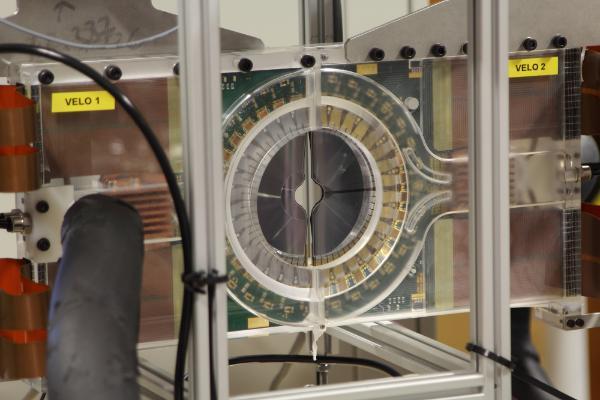University of Liverpool
Halo-Dose correlation in a medical accelerator
Trainee: Jacinta Yap
Supervisor: Carsten P Welsch
Online beam monitoring in medical accelerators is an essential part of thepatient’s safety and also assuring the high quality and efficacy of cancer treatment. Charged particle beams interact with patient’s tissue depositing their kinetic energy in many elastic and inelastic collisions demonstrating the highest energy transfer at the end of their path. Hence beam energy and energy spread; position and lateral profile of the beam as well as the beam current have to be precisely determined and recorded.
In clinical practice ionization chambers provide users with information on the dose rate. However, these interceptive devices degrade the beam and require multiple correction and calibration factors to convert the charge collected into dose. A new non–interceptive method of online beam monitoring would be highly desirable.

The LHCb VELO detector is a positionsensitive silicon detector which has been used for tracking vertices originating from collisions at the LHCb experiment at CERN.
Its advantageous semi-circular design enables approaching the core of the beam without interfering with it. As such, it allows precise measurements of the surrounding beam ‘halo’ which can also provide information about the active delivery of the beam. The halo is associated with scattered particles which can result in additional and unwanted dose being delivered. In a clinical setting the beam passes through several components in the delivery system which shape and adapt the beam for the needs of the treatment. Accordingly, this excess beam is mostly collimated out. However, it is possible to utilize the detection of these peripheral particles with the VELO sensors to determine the parameters of the beam.
The stand alone operation of the VELO detector as an online monitor at the Clatterbridge Cancer Centre, UK (CCC) is being investigated. Correlation of the halo to the core of the beam will yield treatment beam ‘halo’ maps, benchmarked against simulation studies. These maps are being developed into a database to retrieve beam information for different machine settings from beam monitor measurements. Accurate models are necessary to understand beam behavior and integrate the system, a full characterization of the CCC beamline and the validation of Monte Carlo simulations have been performed in collaboration with UCL, RHUL and CCC. This is expected to lead to a standard simulation model for future work at the beamline, as well as facilitate related studies into linear energy transfer, DNA damage, repair and radiobiological cell studies.